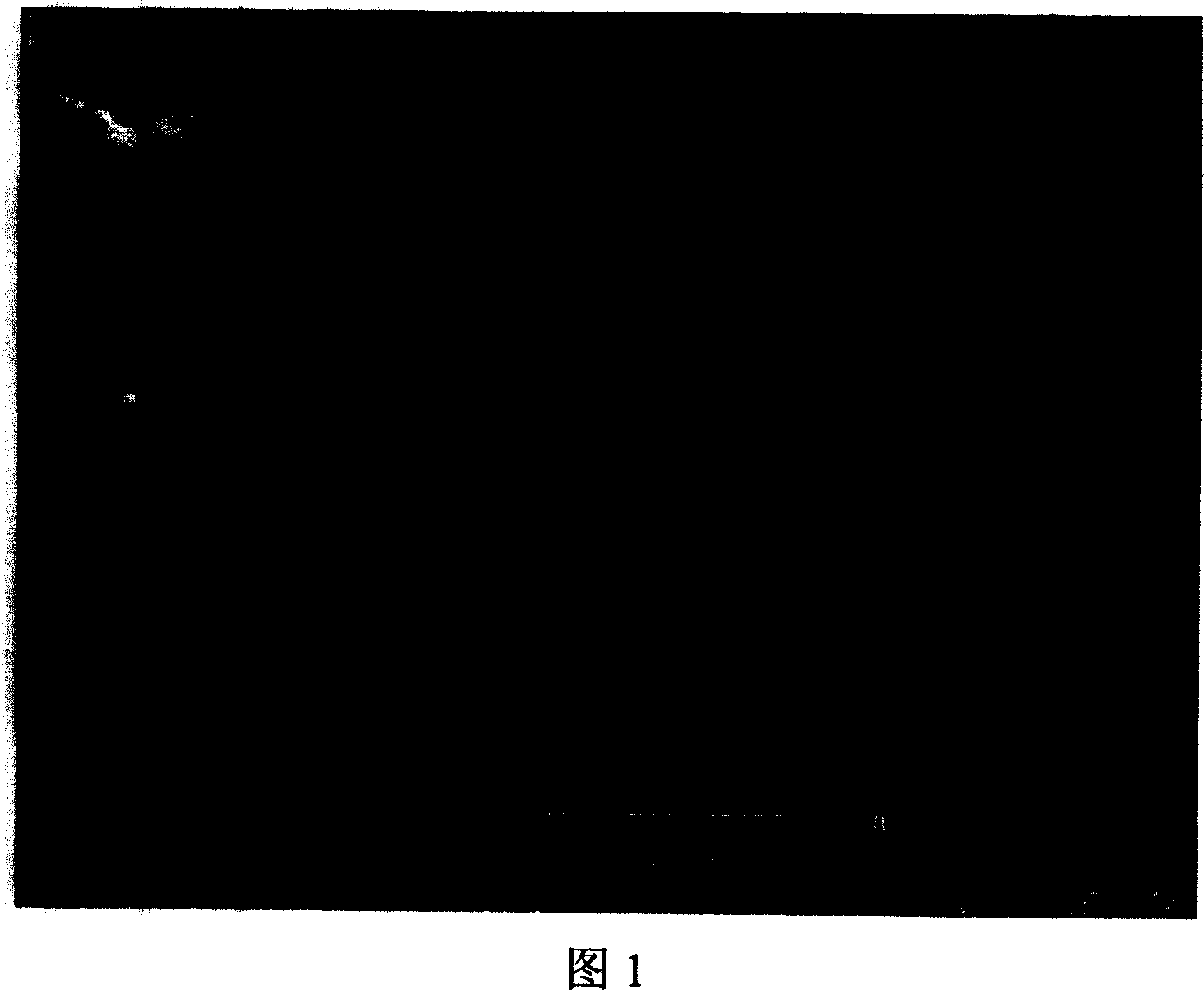Channel augmentative method for fiber sphere separating medium
A technology for separating matrix and cellulose, applied in chemical instruments and methods, other chemical processes, etc., can solve the problem of not developing a macroporous cellulose spherical separation matrix, and achieve easy control and amplification, less environmental pollution, and increased pore size. big effect
- Summary
- Abstract
- Description
- Claims
- Application Information
AI Technical Summary
Problems solved by technology
Method used
Image
Examples
Embodiment 1
[0036] Add 50g cellulose xanthate viscose (containing cellulose 4.1g, CS 2 1.5g, NaOH 3.1g, viscosity is 6800cSt) and 1g concentration is the gelatinized tapioca starch of 5%, stir at room temperature for 20 minutes; Warm up to 30 ℃ and stir for half an hour; Add 300g of mixed oil phase prepared by pump oil and chlorobenzene (pump oil: chlorobenzene=5:1, mass ratio) and 2ml oleic acid, adjust the stirring speed to 500 rpm, keep the speed constant, suspend and disperse at 30°C for 45 minutes, heat up to 90°C within 15 minutes, keep warm After 1.5 hours, solidify to obtain white microspheres; filter the microspheres from the oil phase, wash with boiling water 5 times, add 2% amylase solution of 1 times the volume of the microspheres after cooling, react on a shaking table for 1 hour, and wash with water; The ethanol solution containing 30% acetic acid was regenerated for 1 hour, and then washed with 2 times the volume of methanol and a large amount of water to obtain about 34ml ...
Embodiment 2
[0038] Add 50g cellulose xanthate viscose (containing cellulose 4.1g, CS 2 1.5g, NaOH 3.1g, viscosity is 6800cSt) and 10g concentration are 5% gelatinized tapioca starch, stir at room temperature for 20 minutes; Warm up to 30°C and stir for half an hour; Add 300g of mixed oil phase prepared by pump oil and chlorobenzene (pump oil: chlorobenzene=5:1, mass ratio) and 2ml oleic acid, adjust the stirring speed to 500 rpm, keep the speed constant, suspend and disperse at 30°C for 45 minutes, heat up to 90°C within 15 minutes, keep warm After 1.5 hours, solidify to obtain white microspheres; filter the microspheres from the oil phase, wash with boiling water 5 times, add 2% amylase solution of 1 times the volume of the microspheres after cooling, react on a shaking table for 1 hour, and wash with water; The ethanol solution containing 30% acetic acid was regenerated for 1 hour, and then washed with 3 times the volume of methanol and a large amount of water to obtain about 38ml of ma...
Embodiment 3
[0040] Add 50g cellulose xanthate viscose (containing cellulose 4.1g, CS 2 1.5g, NaOH 3.1g, viscosity is 6800cSt) and 5g concentration is the gelatinized cornstarch of 8%, stir 20 minutes at room temperature; Warm up to 30 ℃ and stir for half an hour; Add 300g mixed oil phase prepared by pump oil and chlorobenzene (pump oil: chlorobenzene=5:1, mass ratio) and 2ml oleic acid, adjust the stirring speed to 500 rpm, keep the speed constant, suspend and disperse at 30°C for 45 minutes, heat up to 90°C within 15 minutes, keep warm After 1.5 hours, solidify to obtain white microspheres; filter the microspheres from the oil phase, wash with boiling water 5 times, add 2% amylase solution of 1 times the volume of the microspheres after cooling, react on a shaking table for 1 hour, and wash with water; The ethanol solution containing 30% acetic acid was regenerated for 1 hour, and then washed with 2 times the volume of methanol and a large amount of water to obtain about 36ml of macropor...
PUM
 Login to View More
Login to View More Abstract
Description
Claims
Application Information
 Login to View More
Login to View More - R&D
- Intellectual Property
- Life Sciences
- Materials
- Tech Scout
- Unparalleled Data Quality
- Higher Quality Content
- 60% Fewer Hallucinations
Browse by: Latest US Patents, China's latest patents, Technical Efficacy Thesaurus, Application Domain, Technology Topic, Popular Technical Reports.
© 2025 PatSnap. All rights reserved.Legal|Privacy policy|Modern Slavery Act Transparency Statement|Sitemap|About US| Contact US: help@patsnap.com


